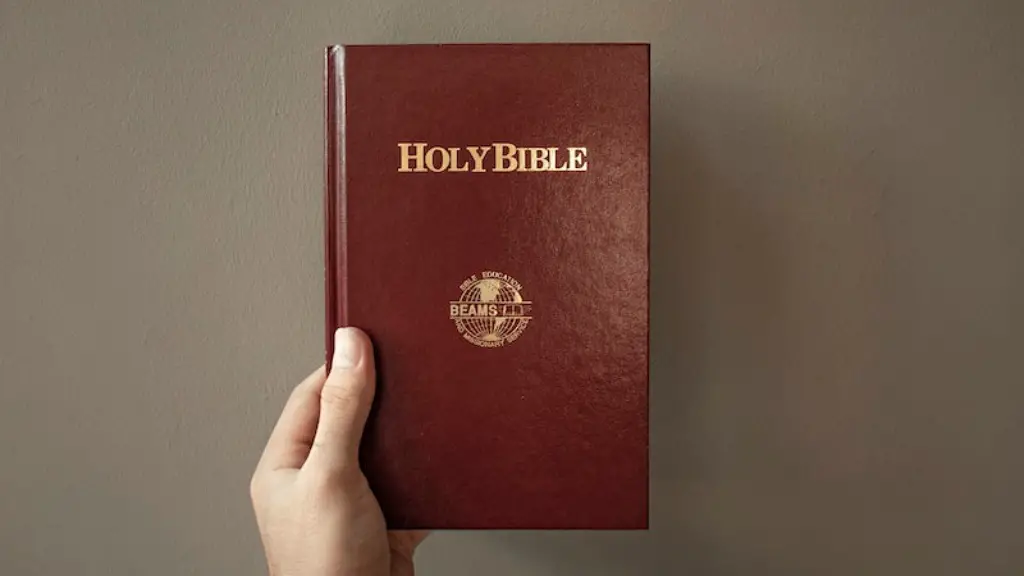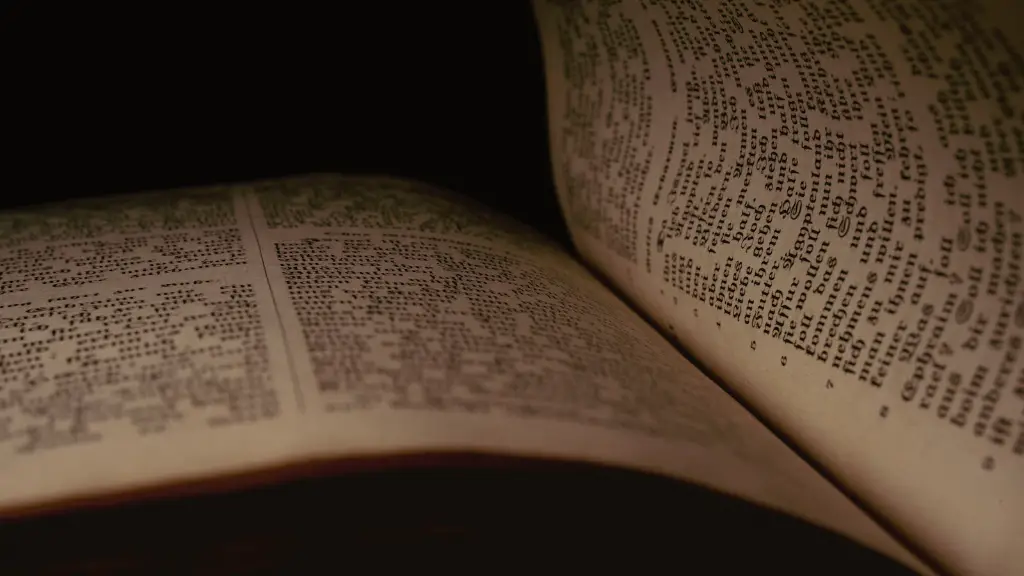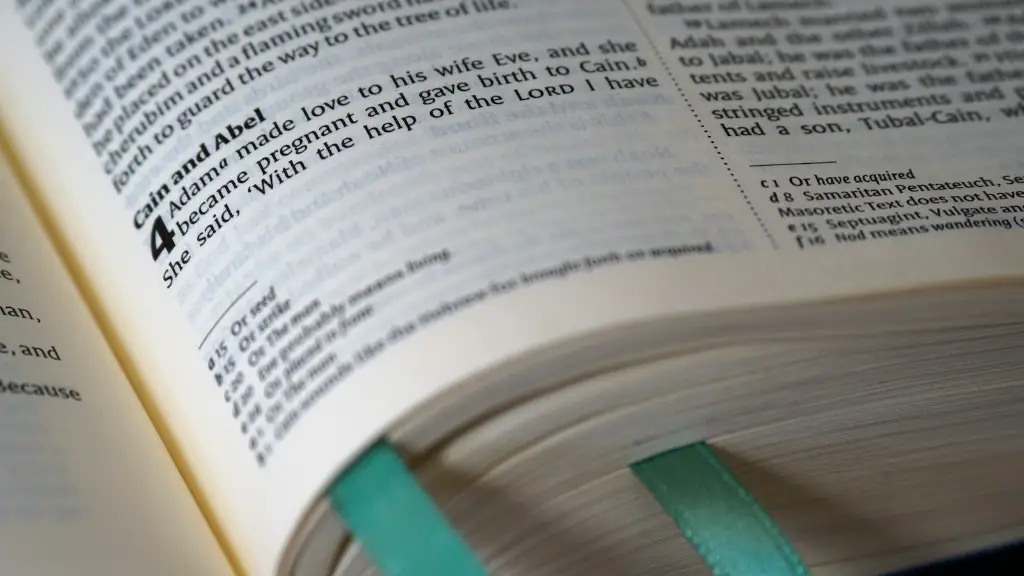Who Was Belial In The Bible
Belial is a term mentioned a few times to represent evil or wickedness in the Bible, with its most notable reference being found in the New Testament. Belial is generally understood to refer to a personification of evil and/or wickedness, although some translations from the original Hebrew also suggest it could be understood as simply meaning ‘worthless’.
One unique aspect of Belial’s story is that the term has evolved over time. In its earliest usage in the Bible, the term is distinctively plural, suggesting it is a group or class of wickedness. Later on, the term begins to be used as a singular form, however its usage in early Jewish literature was still plural.
Belial makes his first appearance in Deuteronomy 13:13, where it is used in a warning against those who would lead Israel astray after other gods: “If you hear of one of your cities which the Lord your God has given you to dwell in, saying; ‘Certain scoundrels have gone out from among you and have caused those who dwelt among you to go astray, saying, “Let us go and serve other gods,” which you have not known…You shall not yield to him nor hearken to him; nor shall your eye pity him, nor shall you spare him, nor give him any favor. You shall utterly kill him; your hand shall be the first against him in destroying him, and afterward the hand of all the people.’”
The Hebrew suggests the scoundrels who are mentioned are known as the ‘Benéi Beliyyaal’, or ‘Sons of Belial’. This was a way of classifying a group of wicked people, in a similar way to the term ‘Sons of Darkness’ as a way of signifying wickedness.
Belial makes several more appearances in the Old Testament as a way of signifying wickedness or evil, although never making a direct appearance. One of the most notable references is in Second Thessalonians 2:3, where it is written, “Let no one in any way deceive you, for it will not come unless the apostasy comes first, and the man of lawlessness is revealed, the son of destruction.” Here, Belial is described as ‘the son of destruction’, implying it is a powerful force of evil and wickedness.
This is also reinforced in Proverbs, as Belial is used to refer to a kind of mental or spiritual weakness. This poses the question of whether Belial is a personification of evil, or simply a metaphor for something greater.
The use of Belial in the New Testament has given it a connotation of Antichrist and of ultimate evil and wickedness. This is perhaps most notably depicted in Revelations, which speaks of Belial as a force that is ‘ready to devour’, signifying its utmost power as an evil presence.
Uses of Belial In Popular Culture
Belial has, over the centuries, been featured in many aspects of popular culture, including in literature and film. One of the earliest examples was the medieval poem, ‘Piers The Ploughman’ (1377), which refers to ‘the fiend Belial’.
He is also the subject of numerous books, including ‘The System of the Belial’ (1731), by John Billingsley. This book is an examination of Belial as an allegory for the ‘dark side’ of human nature, and of an individual’s inner struggle against sin, as well as its consequences.
Belial has gained increasing notoriety in recent decades, with him being featured in many movies, video games and books. In the movie ‘The Bad Seed’ (1956), Belial is depicted as an evil spirit which the main character must battle throughout the film. In video games, Belial is often depicted as a powerful villain or demonic figure.
Belial also makes frequent appearances in books, particularly in books related to the occult or horror genres. One of the most popular works of this genre where Belial appears is Stephen King’s book, ‘Thinner’ (1984). Here, Belial is a malevolent spirit who has been summoned to exact revenge on the protagonist.
Symbols Of Belial
Throughout literature and popular culture, Belial has also been associated with various symbols and imagery. These symbols can be found in artwork, such as his depiction as a demon, or in imagery and emblems such as the ‘Tetragrammaton’, a four-letter symbol of a name of God in the Old Testament.
In addition, Belial has been linked to the sigil of Bael, a figure mentioned in the ‘Lesser Key of Solomon’, a book of magic attributed to King Solomon of Israel. This sigil is associated with power and authority as a sign of Belial’s presence.
Belial also has associations with particular colours. In alchemical texts, for instance, Belial is often associated with the colour black, as well as red, both of which have connotations of darkness, power and evil.
Belial In Modern Day
Despite Belial’s reputation as a powerful force of evil, he has also come to represent different aspects of modern day life. In particular, Belial has been used as a symbol of rebellion and transgression, as a result of being featured in movies, books and video games.
The poem ‘Dr. Faustus’ (1603) by Christopher Marlowe, for instance, features Belial as the devil’s assistant, making him a figure of sin and temptation. In literature, such as Mary Shelley’s novel ‘Frankenstein’ (1818), Belial’s power is used as a warning and a reminder of the consequences of tampering with the forces of nature, in this case via the act of creating life.
Belial has also been used in modern culture as a symbol of hope and of perseverance. In some New Age interpretations of the Belial symbol, the figure is used to convey a sense of inner strength and resilience, as a reminder not to give in to fear, or to despair when facing times of difficulty or hardship.
Belial And The Occult
Belial’s associations with the occult are extensive. In some occultic contexts, Belial is referred to as the ‘king of the earth’, ‘prince of wickedness’, or ‘Prince Belial’. He is connected to various different occultic and mystical systems, including Wicca, Crowleyanity, and Thelema.
As a result of this, Belial has become a popular figure amongst those who practice occult magic, and has been referenced widely in occult literature. In particular, Aleister Crowley originally used Belial as the name of one of the Princes of Evil, which he believed corresponded to one of the four cardinal points on the compass—North.
Belial is also believed to be connected to various rituals, such as the invocation of Lucifer, and is often featured in grimoires and other works dedicated to occult magic. He is also often used as an invocatory name for Satanic prayers and for conjuring specific entities.
Belial As A Figure Of Evil
Overall, Belial can be seen as an important figure in Jewish, Christian and occultic literature. As a result, Belial has become a figure of power and evil for many people, as a symbol of rebellion or of ultimate wickedness. Belial’s story and symbolism has evolved over the centuries, shaping popular culture and raising questions about the nature of evil and wickedness.
Whether Belial is seen as an actual figure of power, or if it is simply an idea, it has certainly become firmly entrenched in modern culture and literature as an embodiment of darkness and wickedness. Its power and influence will likely continue to be felt in centuries to come.
Belial’s Representation in Art
Belial’s presence can be found in different forms of art, such as paintings and sculptures. One of the most famous depictions of Belial can be found in Michaelangelo’s statue of the Madonna and Child, which includes a figure of Belial in the background.
Belial can also be found in various Renaissance paintings, such as Tintoretto’s painting, ‘The Fall and Expulsion of Adam and Eve’, and in Barocci’s altarpiece, ‘The Deposition’. Belial’s representation in art often depicts him as a powerfully-built male figure, with fierce features such as wings, horns and claws.
In more contemporary forms of art, Belial’s presence is often seen as a way of conveying a sense of darkness and fear. He can be found in various horror movies and video games, such as the ‘Mortal Kombat’ series. In these works of art, Belial’s power is used to create a sense of dread, as a warning to viewers of the consequences of indulging in wickedness and evil.
What Belial Represents
Belial is a figure which has been represented in various guises throughout history, from a symbol of ultimate evil and wickedness, to a figure of hope and inner strength. He also appears to be resilient to change, as his presence can be found in both modern and ancient works of literature, art and cinema.
Overall, Belial is an important figure who represents the darker sides of human nature, and of its powers of destruction. He is a reminder not to succumb to fear, darkness or temptation, and serves to warn of the consequences of indulging in thoughts of evil and wickedness.






The word ‘inteprator’ should be ‘interpreter’ in your brief biography at the end.
The abuse of the use of the Tetragrammaton is the practice of fallen angels (refer 1 Enoch 69:13-15) and occultists like Crowley.